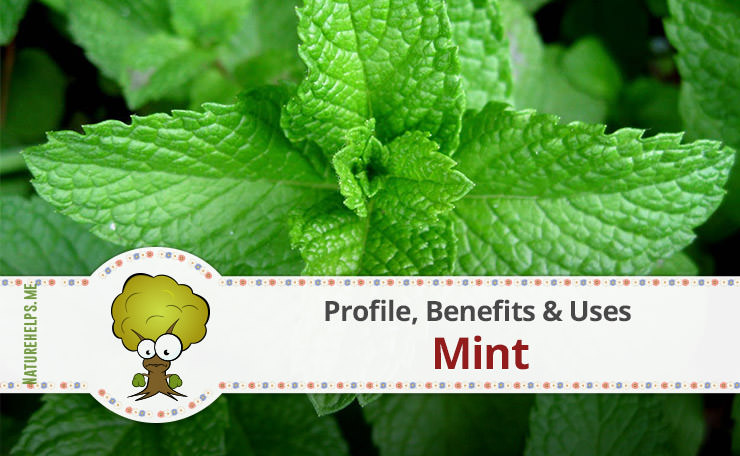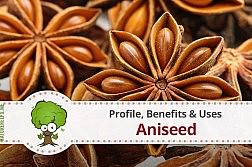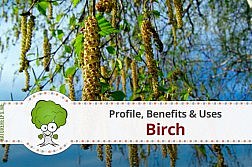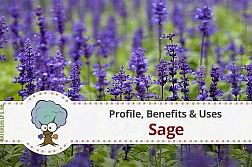Mint has many positive properties that can treat a host of issues in the human body. People have become very creative in harvesting its leaves and finding many ways to use this helpful herb.
Peppermint has greenish-purple lance-shaped leaves while the rounder leaves of spearmint are more of a grayish green color. The taste of both peppermint and spearmint bear a flavor that can be described as a cross between pepper and chlorophyll, with peppermint being a bit stronger and spearmint being a little more cool and subtle.
Mint is popular in many parts of the world, particularly in Arabic, where it serves as the main spice and regularly drink as a tea.
History of Mint Benefits
Mint is an ancient herb used since antiquity for its culinary, medicinal and aromatic properties. The origins of mint are honored in a Greek myth that tells the tale that the plant was originally a nymph (Minthe), who was transformed into a plant by Persephone, who was jealous of the affections that her husband Pluto was showing to Minthe. While Pluto could not reverse the spell that his wife cast, he did impart Minthe with a sweet smell, so when she was walked upon in the garden, her aroma would be delightful to the senses.
Mint’s characteristic smell has made it one of the more popular perfuming herbs throughout history. Around the globe, from Europe to India to the Middle East, mint has been used a strewing herb to clear the air in both temples and homes. Mint has also come to symbolize hospitality in many cultures. In ancient Greece, mint leaves were rubbed on dining tables to welcome guests, while in the Middle East, the host still traditionally offers mint tea to guests upon their arrival.
Mint has played an important role in the American tradition. While the Native Americans were using mint even before the arrival of the European settlers, the early colonists brought this prized herb with them from the Old World since they had long honored it for its therapeutic properties, as well as for the delicious hot tea beverage made from its leaves.
Why Mint is so Beneficial?
- It contains a high amount of menthol, which makes it by the smell recognizable among thousands of plants. Menthol activates receptors sensitive to cold in the skin and mucous tissue, which is why there is a feeling of cooling.
- Menthol is a common ingredient in toothpaste. It helps to prevent gum disease and bad breath, and drinking peppermint tea generally helps to maintain oral health.
- Mint helps soothing the digestive tract, reduces pain in the stomach and intestines, relieves various cramps and nausea, especially those caused by traveling.
- Promotes weight loss, because it has a diuretic effect, stimulates metabolism and suppresses appetite. In addition, tea and other mint preparations proved to be very effective for irritable bowel syndrome.
- One of the primary characteristics of the mint is stress relieve. It contains large amounts of tryptophan, which produces serotonin.
- Reduces headaches and stomach problems caused by stress.
- Mint tea before bedtime soothes the body and helps you fall asleep more easily.
Mint to Reduce Allergy and Asthma
Mint contains vitamins A, C and other active substances such as rosmarinic acid that helps in strengthening the body’s resistance to infection and inflammation.
This herb reduces the symptoms of cold and dry cough, neutralizes free radicals and prevents the production of substances that promote inflammation.
It is believed that mint, thanks to rosmarinic acid, alleviates allergies and asthma. Packs of mint help with allergic rashes, and inhaling tea reduces the blockage of the airways .
Mint can Fix Hormonal Imbalance
Some research suggests that the mint could have anticancer properties, since it contains perillyl alcohol, which showed in researches meritorious for the prevention of colon cancer, skin and lungs. However, full confirmation of this effect needs further research.
It has been proven that regular drinking of mint tea prevents unwanted hair on your legs, chest , face, back and other parts of the body caused by increased secretion of male sex hormones .
Healing Benefits of Mint
- Suppresses inflammation and infection
- Helps with asthma and allergies
- Strengthens the immune system
- Helps with digestive problems
- Prevents gum disease and bad breath
- Promotes weight loss
- Relieves stress and insomnia
How to Use Mint Oil?
Peppermint essential oil contains vitamins A and C, omega-3 fatty acids, minerals iron, manganese, magnesium, calcium, potassium and copper.
It is suitable for the treatment of many health problems and acts much like mint tea.
Approved in official medicine for the treatment of migraine, rheumatic disorders, pruritus (itching) skin, allergic skin, bloating, irritable bowel, cold and cough.
In aromatherapy, this oil is recommended to take orally for problems with the gall bladder, liver problems and acne.
Peppermint in Nutrition
Mint is widely used in the nutrition. It gives a flavour to soups, salads, vegetable dishes, desserts and beverages.
Peppermint tea is popular in Africa and the Middle East, where he served in a special silver cups.
When preparing mint tea remember that cleanliness and quality of water affect the taste.
Pour 200 ml boiling water over 1 teaspoon mint. Cover and let stand for 5 to 10 minutes. Strain and enjoy fresh mint tea.
Contraindications in usage of mint
Individuals with gastro-esophageal reflex disease (GRD) are advised to limit peppermint use in their diet since the compounds in mint leaves may relaxes smooth muscles in the esophageal wall and sphincters by blocking calcium channels in them, which can aggravate their reflux condition




